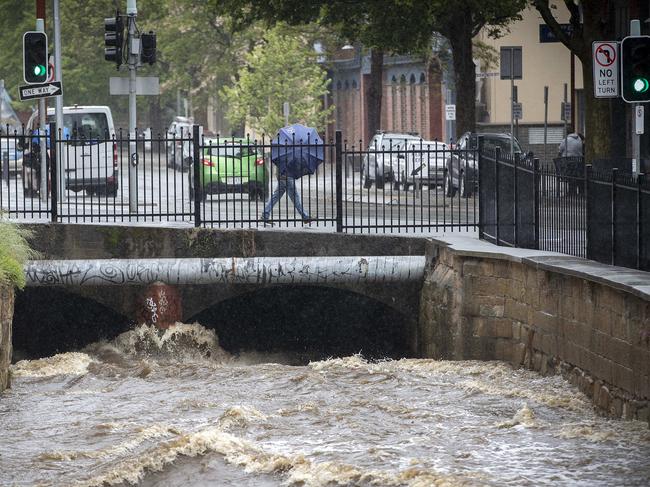Tasmania’s weather records already broken in 2022
Official Bureau of Meteorology figures show how many rain and temperature records have already been broken in Tasmania this year. Find your suburb’s weather stats on our interactive map.
Tasmania
Don't miss out on the headlines from Tasmania. Followed categories will be added to My News.
Australia could be on track for a record year for climate records, with official Bureau of Meteorology figures showing extraordinary results across all states and territories for every month of 2022 so far.
Tasmania has swung between extremes, with deluges in January, May, June and August, but also prolonged dry periods in February, March, April and July. August also saw six locations record new highs for maximum temperatures.
The year has already seen some weather jaw-droppers. Australia’s equal-highest-ever temperature (50.7 degrees) was recorded in WA in January, while Sydney has already surpassed the total for its wettest year ever – with 12 weeks still to go – and in February the Wilsons River in Lismore smashed its previous flooding level by more than two metres.
While there have been new records set for maximum, minimum and average temperatures, the vast majority of records that have fallen have been for rainfall.
In January, 34 different locations in South Australia and 24 in Victoria saw record monthly rainfalls. In May, 59 sites in Queensland hit new rain records. And in July, 110 official weather stations across NSW registered monthly rainfall tallies above any previous record.
The year has been such an outlier that some records that had been standing for decades were smashed. In one case in Adelaide, a daily rainfall record that had stood for 112 years was toppled.

In other cases, existing records were obliterated. In August, Winton in outback Queensland
received 89mm of rain for the month – more than double its previous record of 44mm.
Other significant records could fall before the end of the year, with weather-watchers tracking rainfall tallies in Brisbane to see if it will follow Sydney in notching up its wettest year to date. A total of 1745mm has fallen in the Queensland capital so far this year – not far off the record 2242mm which fell back in 1893.
“It would take one east coast low to nudge pretty close to that record for Brisbane,” Sky News Weather meteorologist Alison Osborne said.
“We definitely can’t rule that out happening. It’s not certain, but certainly possible.”
In its Climate Outlook released this week, the Bureau of Meteorology forecast above-median rainfall for most of the eastern half of Australia until January, with the highest probabilities occurring in November.
Ms Osborne said we wouldn’t know if 2022 was Australia’s wettest-ever year until January.
“But if you think about record-breaking years, 2019 was our hottest and driest year on record; it has been quite the swing in the intervening 36 months since then,” she said.
In addition to the La Nina and negative Indian Ocean Dipole climate drivers affecting Australia in 2022, the country has also been affected by a weather phenomenon called the Southern Annular Mode, which “tracks the ring of winds that whips around Antarctica,” Ms Osborne said.


“Depending on how close those winds are to Antarctica or how close they are to Australia, they can also influence rainfall. We’ve seen that in a positive state for quote prolonged periods this year and that favours more rain over eastern Australia,” she said.
Dr Agus Santoso from the Climate Change Research Centre at UNSW said it was possible the La Nina effect may dissipate by summer, but despite the massive rainfall it has helped produce this year, it was not considered as strong as some in the past.
“The La Ninas we have had in the past two, three years are not record-breaking La Nina events. They are considered weak to moderate events,” Dr Santoso said.
“We had an extreme La Nina that was considered record breaking back in 1998, following a record breaking El Nino.”
Dr Santoso said research was showing the frequency of extreme La Nina and El Nino events could increase in future, because of global warming.
Originally published as Tasmania’s weather records already broken in 2022





